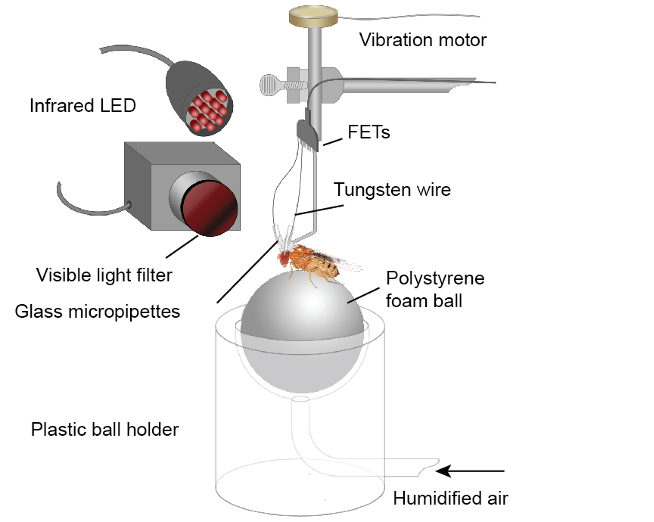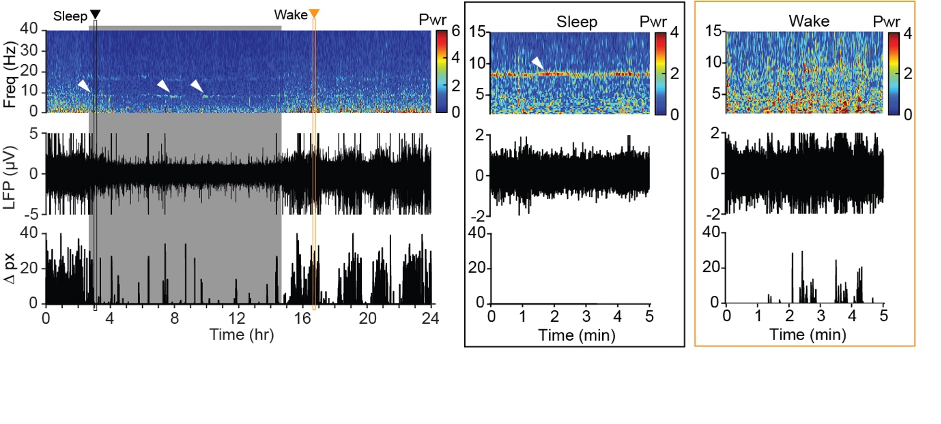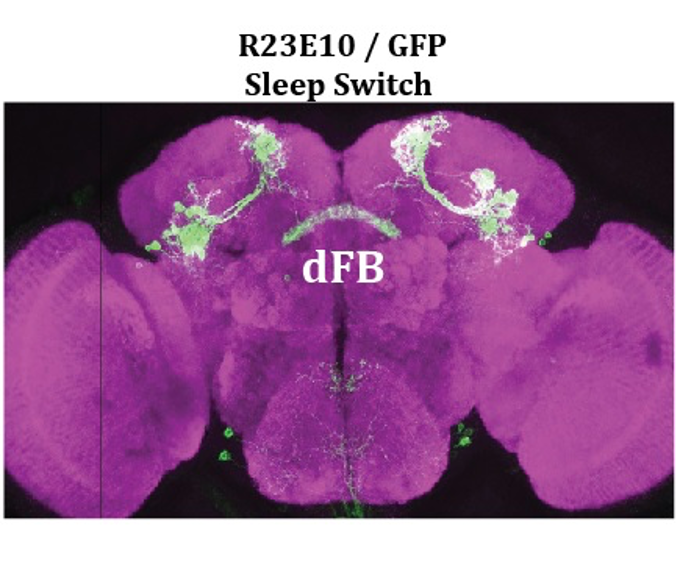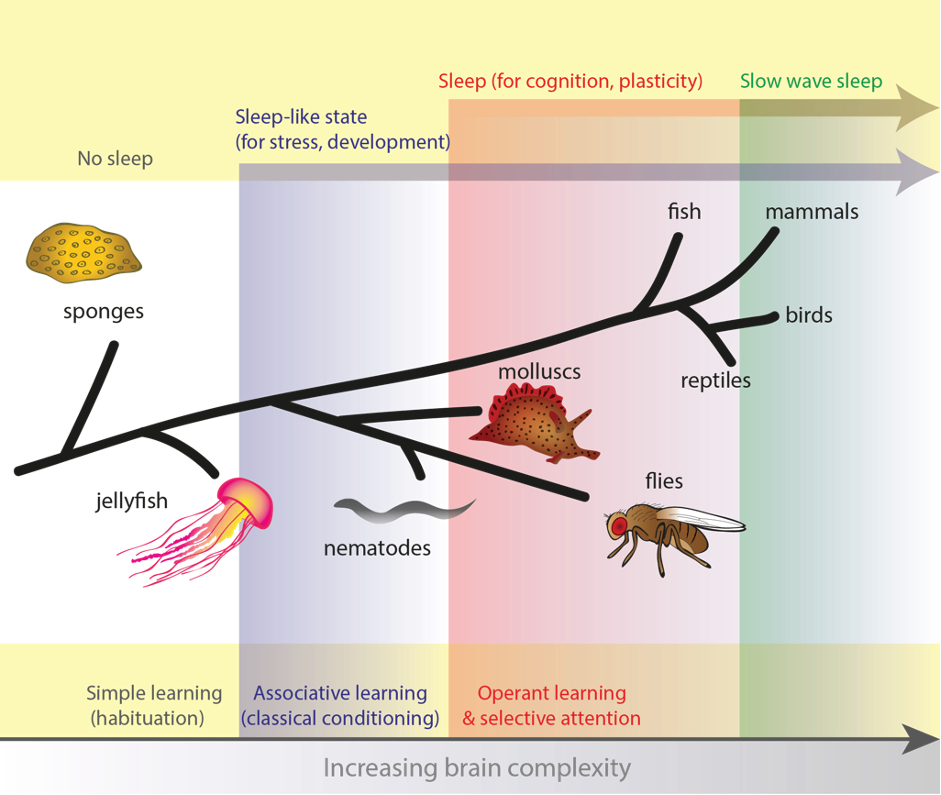Functional analysis of sleep promoting neurons in health and disease
This project is a collaboration with our colleague Paul Shaw (Washington University in St Louis, USA) to understand how small populations of neurons in the fly’s central brain promote sleep and thereby help achieve key sleep functions.
Objective/mission (the vision)
The discovery of sleep-promoting neurons in the Drosophila brain has been a great development for the field, as it allowed sleep to be controlled as an experimental variable. Acute control provides greater leverage for understanding how sleep works and what it does foe the brain. We have discovered that sleep is not just one phenomenon in the fly brain, and that a small population of cells in the central brain promotes an ‘active’ kind of sleep, which could be analogous to REM sleep in mammals. Our goal is to understand how this sleep works to block out the world while maintaining a wake-like brain state, what this kind of sleep is good for, and how it differs from deep sleep.
Research approach (the initiative)
To identify and study different sleep stages in flies requires both behavioural approaches (to measure differences in sleep intensity) and brain imaging or electrophysiology (to track how brain activity is changing). We begin by studying spontaneous sleep in wild-type Drosophila as well as mutant flies, to understand how sleep changes throughout a sleep bout. We then use transgenic approaches to acutely control sleep-promoting neurons with light or temperature. Electrophysiological recordings from the fly brain (using single channel glass electrodes or multichannel probes) reveal how local field potentials change during sleep stages in flies. 2 -photon imaging provides a complementary spatial dimension to these experiments, along with more precise knowledge of the identities of cells involved in various sleep processes. Finally, behavioural analyses allow us to determine sleep intensity profiles, and also if sleep functions such as attention are being affected.
Impacts and applications
It is becoming increasingly clear that sleep achieves a variety of distinct functions, and that these are segregated in different sleep stages. This organisation of sleep seems to be evident even in the smallest animal brains, such as Drosophila, suggesting that we can use flies to understand how these diverse sleep functions are achieved. This has important implications for human health, as sleep deprivation is a growing concern in most modern societies and most neurodegenerative disorders seem to be associated with poor sleep. By understanding the various benefits of sleep and how these are deployed by different sleep stages, we will be in a better position to tailor individualised therapies based on conserved sleep functions.
Partners/collaborators
Professor Paul Shaw (Washington University in St Louis, Missouri, USA)





